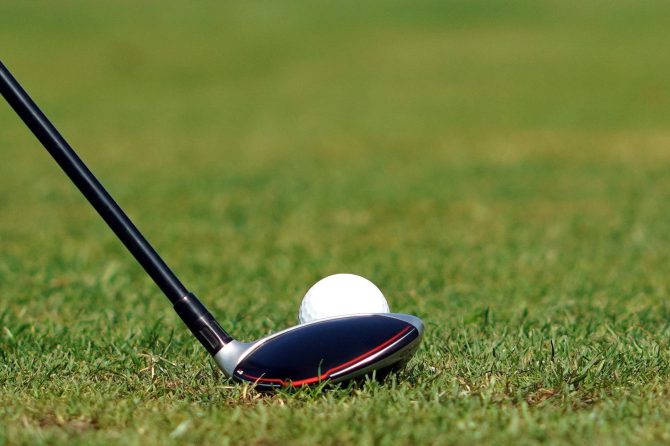In the realm of golf instruction, the conventional emphasis on high-speed swing mechanics often overshadows the profound advantages of deliberate, slow-motion practice. Recent research highlights that engaging in slow-motion swing practice serves not only as a technical exercise but also as a potent cognitive training tool. This approach promotes a deeper understanding of swing mechanics, enhances spatial perception, and cultivates greater body awareness. By decelerating the swinging action, golfers can devote cognitive resources to analyzing their movement patterns, thereby improving precision and motor skills. The intersection of mind and body in golf underscores the psychological nuances inherent in swing growth. Slow-motion practice aids in the visualization and internalization of optimal techniques, allowing golfers to refine their performance on the course. This not only facilitates better learning through expanded motor control but also fosters an increased efficiency of movement. As athletes explore the cognitive dimensions of their practice, they can unlock new pathways to mastery, ultimately enhancing both their technical skills and competitive performance.
Cognitive Load and Motor Skill Acquisition in golf Swing Practice
The concept of cognitive load plays a significant role in how golfers acquire and refine their swing techniques. Cognitive load refers to the amount of mental effort being used in the working memory, which can impact motor skill learning. By engaging in slow-motion swing practice, golfers can significantly lower their cognitive load, allowing for enhanced focus on specific aspects of their swing mechanics. This targeted practice facilitates a deeper understanding of the nuances involved, such as grip pressure, body alignment, and timing.
During slow-motion practice, golfers have the chance to break down their movements into distinct components, which is crucial for effective motor skill acquisition. By focusing on individual phases of the swing—such as the takeaway, the backswing, and the follow-through—players can identify and rectify errors that might go unnoticed during full-speed swings. This method can yield the following benefits:
- Enhanced Motor Patterns: Promotes neural pathways responsible for efficient movement.
- Improved Focus: Reduces distractions and allows for concentrated practice.
- Refinement of Technique: Facilitates correction of specific flaws in execution.
Additionally, maintaining a lower cognitive load can significantly reduce performance anxiety, enabling golfers to approach their practice with a sense of calm and purpose. This psychological state can be nurtured through consistent engagement in slow-motion drills, where learners assimilate information at a more digestible pace. Furthermore, engaging in slow-motion golf swing practice activates several cognitive mechanisms essential for mastering the sport. This technique promotes heightened awareness of body movements and club positions, allowing players to finely tune their actions. By diminishing the speed of the swing, golfers can better perceive and analyze their biomechanics, leading to improved motor coordination. Such cognitive benefits can translate into improved performance on the course, as golfers not only refine their physical skills but also cultivate mental fortitude, essential for peak performance under pressure. Over time, this gradual integration strengthens both the mental and physical components of golf, ultimately leading to betterment in overall performance. The connection between cognitive processes and motor skill acquisition is thus essential for both novice and expert golfers seeking to elevate their game.
The Role of Visualization Techniques in Enhancing slow-Motion Training
Visualization techniques serve as a powerful complement to slow-motion swing training, significantly enhancing a golfer’s performance by refining cognitive processes. By engaging in mental imagery, players can create vivid representations of their desired swings, allowing for an enhanced understanding of mechanics and timing. This cognitive rehearsal reinforces neuromuscular patterns, making it easier to translate the insights gained from slow-motion practice into actual performance. The synergy between visualization and slow-motion training aids in refining the kinesthetic awareness necessary for achieving a consistent and effective swing.
Moreover, visualization fosters a heightened sense of sensory awareness, crucial when executing a complex skill like a golf swing. By mentally visualizing each phase of the swing—backswing, transition, follow-through—athletes can better anticipate the sensory feedback associated with each movement. This meticulous attention to detail enables golfers to identify and correct inconsistencies in their technique in real-time. The incorporation of visualization aids in establishing a relationship between the mental image and physical execution, promoting not only skill acquisition but also a deeper connection to one’s body in motion.
To maximize the benefits of integrating visualization with slow-motion training, golfers can adopt several practical strategies:
| Strategy | Description |
|---|---|
| Pre-Session Visualization | Spend a few minutes visualizing the perfect swing before starting the slow-motion practice. |
| Post-session Reflection | After the practice, visualize the swing adjustments made and how they felt. |
| Consistent Mental Rehearsal | Incorporate visualization into daily routines, reinforcing swing mechanics mentally. |
By systematically applying these strategies, golfers can not only enhance their slow-motion swing training but also lay the foundation for a more profound and effective learning experience.
Attention and Focus: Maximizing performance Through Mindfulness
Incorporating mindful slow-motion swing practices significantly enhances a golfer’s attention and focus during play. Mindfulness encourages a heightened state of awareness, allowing golfers to engage deeply with each aspect of their swing. By practicing in slow motion, athletes can break down their movements into distinct components. This not only fosters a greater understanding of biomechanics but also cultivates the ability to concentrate on specific elements of the swing, such as grip, posture, and follow-through. As a result, golfers can experience improved muscle memory and accuracy.
The benefits of sustained attention during practice sessions can be attributed to cognitive mechanisms that enhance performance. When golfers are mindful, they reduce cognitive overload and anxiety, often seen in high-pressure situations. This state of focused engagement leads to enhanced decision-making skills on the course. Techniques such as controlling breath and consciously directing thoughts during slow-motion swings can help golfers preemptively identify and address areas needing improvement. Such focused practice allows for immediate feedback and adjustment, which is essential for performance enhancement.
| Benefits of Mindful Slow-Motion Swing Practice | Description |
|---|---|
| Increased Awareness | Enhanced understanding of swing mechanics. |
| Improved concentration | Greater focus on swing components during practice. |
| enhanced Muscle Memory | Better retention and recall of swing techniques. |
| Reduced Anxiety | Lower cognitive load leading to clearer decision-making. |
Ultimately, enhancing focus through mindful practices positively influences golfing performance. By experiencing a deeper connection with their movements, players can also transition this improved awareness into on-course scenarios. The mental clarity gained from such focused practice allows athletes to handle pressure more effectively, leading to a more consistent performance. Investing time in slow-motion swing techniques is not merely an exercise in physical skill; it is a strategic approach to cultivating a winning mindset.
The Impact of Slow-Motion Practice on Neural Pathway Development
The practice of executing slow-motion swings in golf has significant implications for neural pathway development, facilitating a deeper connection between cognitive processes and motor skills. By engaging in this deliberate practice technique, golfers can strengthen their neural circuitry related to swing mechanics, resulting in enhanced motor learning and skill retention. The ability to slow down the execution of the swing allows individuals to engage more fully in cognitive mapping of their movement patterns, ultimately promoting a refinement in technique that is intrinsically linked to improved performance on the course.
Moreover, the repetitive nature of slow-motion practice reinforces the development of myelination in specific neural pathways associated with the golf swing. This physiological process leads to faster signal transmission between neurons, enhancing muscle coordination and response times. As players hone their skills through this method, they essentially train their brains to anticipate and execute movements with increased precision. Slow-motion practice not only enhances physical skills but also prepares athletes mentally, making them better equipped to respond to the dynamic challenges of the game.
To further illustrate the potential cognitive benefits of this method, recent research highlights how slow-motion practice can lead to observable changes in brain activity patterns. Studies suggest that such practice not only strengthens primary motor areas but also positively influences non-primary motor regions, resulting in a more comprehensive understanding of swing dynamics. By understanding these cognitive underpinnings, golfers can appreciate the intricate connections between their mental strategies and physical performance, ultimately leading to mastery over their craft. The table below encapsulates some key neural benefits of slow-motion swing practice:
| Neural Benefit | Description |
|---|---|
| Increased Myelination | Enhances speed and efficiency of signal transmission in motor pathways. |
| Improved Cognitive Mapping | Facilitates better visualization and understanding of swing mechanics. |
| Enhanced Motor Imagery | Reduces cognitive load and improves performance under pressure. |
Integrating Slow-Motion Techniques into Regular Training Regimens for Optimal Results
Incorporating slow-motion techniques into a golfer’s training regimen can deepen the understanding of swing mechanics and enhance cognitive processing. By engaging in slow practice, golfers are afforded the opportunity to analyze each segment of their swing in greater detail. This method promotes increased sensory awareness, allowing players to identify subtle nuances and misalignments that often go unnoticed during regular-speed swings. As attention is shifted to the mechanics involved, players can internalize the correct movements, thus strengthening their muscle memory and fostering a robust foundation for effective swings.
The benefits of slow-motion training extend beyond mere physical adjustments; they also facilitate the development of strategic precision. By consciously controlling the tempo and rhythm of their swings, golfers can better assess their timing and alignment. This heightened level of focus encourages a deeper connection between mental strategy and physical execution, which is critical for triumphant performance on the course. Players can benefit from breaking their training into manageable components, allowing for greater retention and adaptation of complex motor patterns. A recommended approach includes:
- Segmenting the swing into key components (e.g., takeaway, impact, follow-through)
- Visualizing the swing mechanics while practicing in slow motion
- Integrating feedback from observers or video analysis to refine technique
Furthermore, the cognitive benefits associated with slow-motion practice extend beyond mere physical attributes; they encompass aspects such as concentration, neural pathways development, and the ability to visualize successful outcomes. Integrating slow-motion techniques not only elevates performance but also fosters a deeper understanding of the intricacies involved in golf. By systematically applying these practices, golfers minimize errors and reinforce their skills, ensuring a high level of performance across varied conditions. Investing time in slow-motion swing techniques not only enhances physical skills but also cultivates a resilient mental framework prepared for competitive settings.





